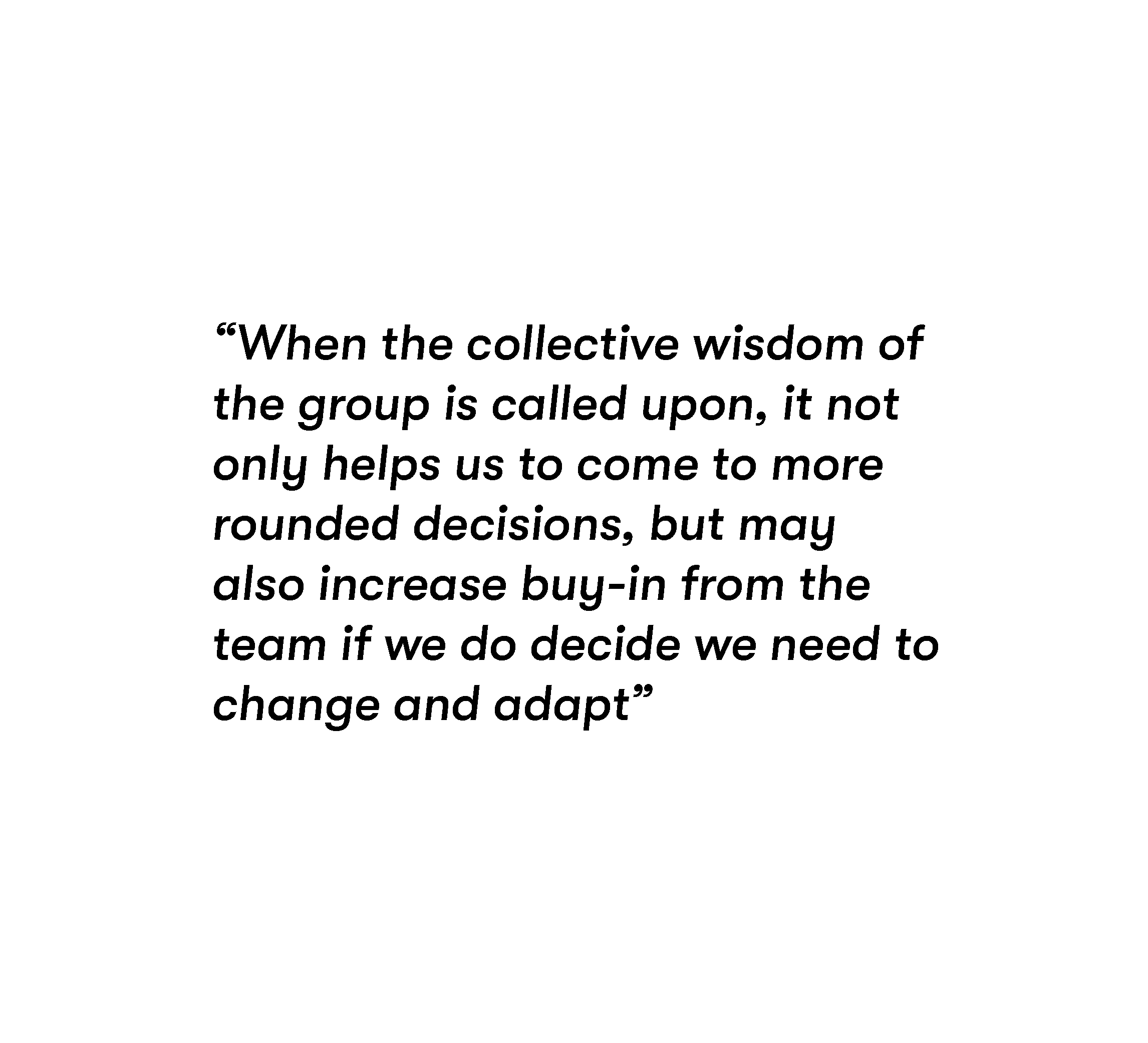Nov 01 2020, by Fleetwood Urban (Marketing)
Mind Matters
Exploring the concept of ‘adaptability’ with Liam Burnell, Research Scientist at UK-based performance psychology firm, Mindflick
In early October 2020, Mindflick published a thought-provoking article on the topic of adaptability for the respected American-based business magazine, Fast Company (you can read it here). We were so taken by what they had to say, we reached out directly to take the conversation even further in this exclusive interview with Mindflick Research Scientist, Liam Burnell.
FWD: Liam, your recent article in Fast Company provided fascinating insights into the value of enhancing our adaptability. While it seemed to focus more on individual adaptability, would it be fair to say the core principles are just as relevant at a company or project team level?
LIAM BURNELL: There are similarities, but also differences. As you rightly say, the core principles are pretty similar to individual adaptability. It involves the capacity to spot a shift in context before being able to respond accordingly so that we can continue moving towards the goals we want to achieve. However, within teams, there is an added layer of complexity in that there are many more moving parts. For example, who decides that we need to adapt? And does everyone need to be involved in the decision? There’s no hard and fast rule here. But what we know is that when the collective wisdom of the group is called upon, it not only helps us to come to more rounded decisions, but may also increase buy-in from the team if we do decide we need to change and adapt.
FWD: In your experience, what makes some businesses more adaptable than others? Are there any common traits in those that do it best?
LB: It’s less intuitive than you might think! Often, the thing that connects such teams isn’t about their size, structure, industry, or anything else. It’s actually about how they do things. Teams or businesses that come across as more adaptable regularly assess, update and align their goals and processes in line with new contextual information. Whether this be in the form of regular meetings, debriefs or digital feedback, they continually evaluate what’s currently working for them, helping them to evolve in light of an ever-changing context. On top of this, they create an environment which breeds confidence within their people – helping them to be more optimistic and hopeful about the direction the team are moving in. They also encourage people to proactively problem solve, allowing them to speak up and voice concerns at the earliest signs of a potential problem. This helps team members to approach different situations feeling empowered and confident, but it also helps the team to tackle problems early on, instead of letting them grow into bigger ones that may cause bigger issues later.

Liam Burnell, Research Scientist, Mindflick

FWD: One of the recurring themes in your article was the importance of being able to adjust how we think or behave in different situations, staying focused on our ultimate goals but also staying open-minded about how we actually realise them. It makes so much sense, but in practice is far from easy, especially in the face of an unexpected crisis. Why is that?
LB: It’s a great question. There’s actually a biological reason for this. When we come across unexpected situations, we can begin to feel stressed, and our body releases a hormone called cortisol to help us deal with the situation at hand. However, as a bit of a side effect, cortisol actually binds to the part of the brain which helps us to spot a shift in the context (i.e. how it is different) – and so our perspective on the situation can start to become more fixed. The takeaway message being that a stressed brain is less adaptable – and explains why managing our emotions during unexpected situations or crisis is so important to how we deal with them.
FWD: Generally speaking, do you think today’s businesses and senior managers truly understand the value of adaptability?
LB: I think some do, although I don’t think the full value is yet known. The concept is getting more and more attention, particularly due to the current context. How we then create an environment that facilitates the development of adaptability and encourages individuals and teams to leverage their adaptability is perhaps less known. One of the reasons we (Mindflick) turned our attention to the concept was because of the way adaptability seems to underpin so much success, particularly in high level sport. Somewhat counterintuitively, those that were able to maintain consistency in their performances where the ones that were most adaptable. They would tweak their approach depending on the challenge in front of them. When you look at the science of adaptability, there’s so much evidence of its positive impact on a whole range of outcomes, from developing more meaningful relationships, enhancing performance and improving problem solving abilities, to increasing individual wellbeing, managing transitions more successfully, all the way through to more effective leadership.
FWD: In the quest to create a more adaptable workplace, what do you think is more important? Adjusting individual mindsets? Or company structures?
LB: I’m going to sit on the fence here and say the answer is probably both! When it comes to creating an adaptable workplace, you need individuals to realise the importance of their own behaviour and mindset when going about obtaining a collective goal. We need them to remain open to changing the way they do things, and the research within teams actually suggests that when individuals adopt a more optimistic outlook and are encouraged to identify potential problems early, this can actually improve a team’s ability to adapt.
Alongside this, company structures and processes are also crucial to helping us create an adaptable workplace. By providing the space for regular debriefs of both successes and failures it allows people to pick up on shifts in context more easily, and thus adapt even quicker. This is further helped if we can ensure that everyone remains aligned towards a common goal, as without this people may start to make changes that may seem somewhat random and ineffective as they begin to pull in different directions.

Team thinking together as a diverse group of people coming together joining hands into the shape of an inspirational light bulb as a community support metaphor with 3D elements.
FWD: What role does greater employee empowerment play in all this?
LB: It plays a big one. The research suggests if individuals aren’t involved in the process of evaluating the need to change, you can quickly lose their buy-in. By taking into account everyone’s experiences and empowering people to be involved in this process, not only can the team get a more rounded perspective on the current situation, it can help to foster a collective sense of belonging and control – two things which can help alleviate apathy towards change, increase motivation and enhance the effectiveness of the business.
FWD: Inertia is a powerful force in life, and also business. What would you suggest are some of the first practical steps a business or project leader could take towards enhancing the adaptability of their team?
LB: The first step is to focus on becoming more ‘team-aware’. This involves working together to understand the goals we’re currently working towards, and what we’re currently doing as a team to help us achieve them. After all, if we don’t know where we’re starting from, then how do we adapt? After increasing our team’s awareness, we can then begin to evaluate our effectiveness as a team. Is what we’re doing working? What might we need to change? How might we be even more effective? Through asking such questions on a regular basis, we can begin to recognise what’s currently working for us, what could be holding us back, and, importantly, how we might need to adapt to help us consistently perform in the setting we’re in.



